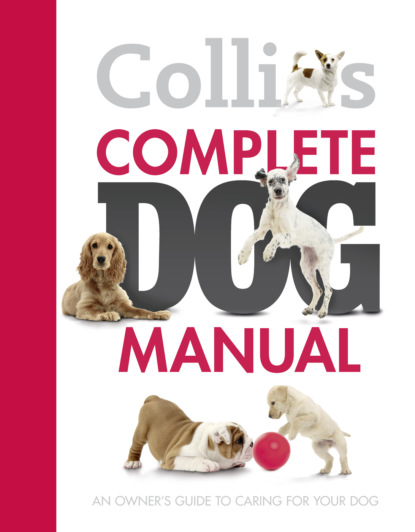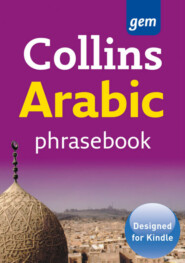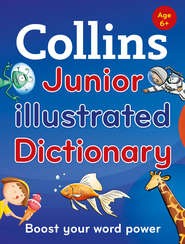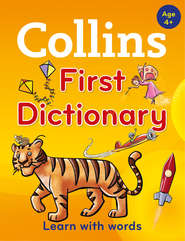По всем вопросам обращайтесь на: info@litportal.ru
(©) 2003-2025.
✖
Collins Complete Dog Manual
Настройки чтения
Размер шрифта
Высота строк
Поля
Utility (#litres_trial_promo)
Pastoral (#litres_trial_promo)
Other Popular Breeds
Useful Addresses
In the following pages you will find detailed information on the thirty most popular dog breeds plus brief descriptions of some other well-loved breeds that make good family pets. The way in which dogs are classified varies, and different countries and their canine governing bodies still use different systems. However, they are usually classified according to the type of work they perform.
Gundog Group
These Gundogs were specifically bred to work at finding, flushing out and retrieving gamebirds.
Hound Group
These speedy dogs were developed to hunt, chase and kill prey. They are divided into scenthounds and sighthounds for locating prey.
Working Group
These dogs have been bred over the centuries to perform specific tasks, including guarding, rescue work and police work.
Terrier Group
These dogs were bred to hunt and dig out vermin and small game. Most terriers evolved in the British Isles and they all adore digging.
Toy Group
These miniature dogs were first developed and bred to become companions and pets. Their size makes them suitable for city life.
Utility Group
This group of popular pet dogs contains all the breeds that do not fit easily into the other categories. Dogs in this group make good pets.
Pastoral Group
These ancient dogs have been used to protect livestock for centuries. They tend to be highly intelligent but need a lot of exercise.
Golden Retriever from the Gundog group. (It’s Me Or the Dog © HarperCollins/ © Mark Read)
Cocker Spaniel
(© Jean Michel Labat)
Friendly and sociable and happy-go-lucky, the Cocker makes a lovely family pet. A hallmark of this breed is its happiness when working. Indeed, the Cocker’s enthusiasm knows no bounds, underlined by the incessant tail wagging. It hurriedly quarters the ground, freezing as it bolts a bird or rabbit, waiting for the shot, and then goes after the next. Remembering where the game lies, the Cocker can easily find and retrieve it unmarked because it has an extraordinarily soft mouth.
History
This charming spaniel is believed to have originated in pre-fourteenth-century Spain. It evolved through selective breeding from several Gundog breeds, depending on the terrain worked and the prey. Originally Cockers assisted in falconry and were later used to drive birds into nets. When game-bird shooting reached its zenith during the nineteenth century, the Cocker was found to be particularly effective in putting up woodcock.
Description
A square dog with a merry nature and a soft expression. It is well muscled with good bone and is an easy mover. It has a silky, flat coat, well-feathered forelegs and underparts and above the hocks. Its greatest pleasure is joining in family activities, lying by the fire, horse-play with the children, shopping with mother and shooting with father.
Fact File
Group: Gundog
Country of Origin: Spain
Male: 39–41 cm (15½–16 in)
Female: 38–39 cm (15–15½ in)
Coat: Flat or wavy, with good feathering; dense, water-resistant undercoat.
Life Expectancy: 11–12 years
Guarding Instinct: Will warn of any approaching intruders.
Temperament & Grooming
Temperament: Sweet-natured and co-operative. Today there are more pets than there are workers because Cockers are gentle, intelligent, biddable and easily trained. A classic companion, mainly because Cockers love fellowship.
Grooming: Daily attention to ears and feathering. Comb out any debris after exercise and groom the dog at least once a week.
Exercise & Feeding
Exercise: To stay happy, the Cocker Spaniel needs all the exercise possible, particularly free running in woods and fields.
Feeding: There are no special feeding requirements.
Health Problems
Some hip dysplasia (#litres_trial_promo) and kidney problems (here (#litres_trial_promo)). Only buy puppies from eye-tested parents.
English Springer Spaniel
(© John Daniels)
A loving family pet, Springers also make great working Gundogs with boundless energy – being so energetic, these dogs become a nuisance without early training. Their prime object is to ‘spring’ game from their hiding place for the shooters but they can also point and retrieve. They will enter the thickest cover fearlessly and leap into freezing water to retrieve a bird. Their extraordinary sense of smell has recently been exploited by police and customs, who train Springers to sniff out drugs and explosives.
History
One of the oldest recorded sporting dogs, the lively Springer Spaniel was first mentioned in literature by the poet Chaucer. The word ‘Spaniel’ may be derived from the French word for ‘Spanish’, ‘Espagnol’. The Springer was developed to become one of the great working Gundogs during the nineteenth century.
Description
The Springer is taller than the Cocker Spaniel, with a weather-resistant coat and feathering on the ears, forelegs and hindquarters. The coat may be black and white, liver and white, or one of these with additional tan markings.











